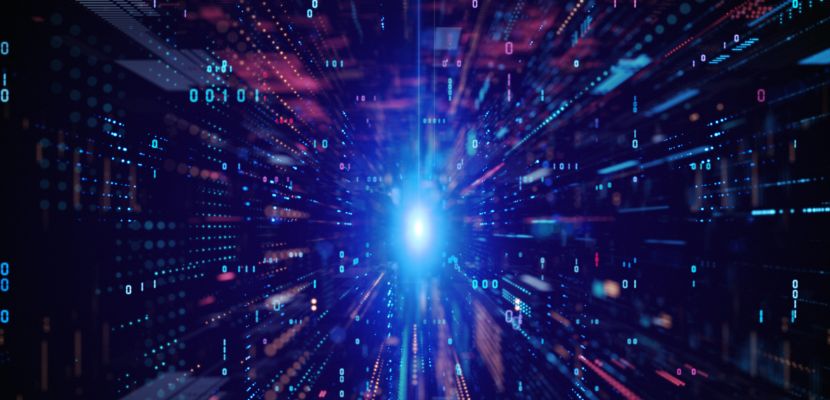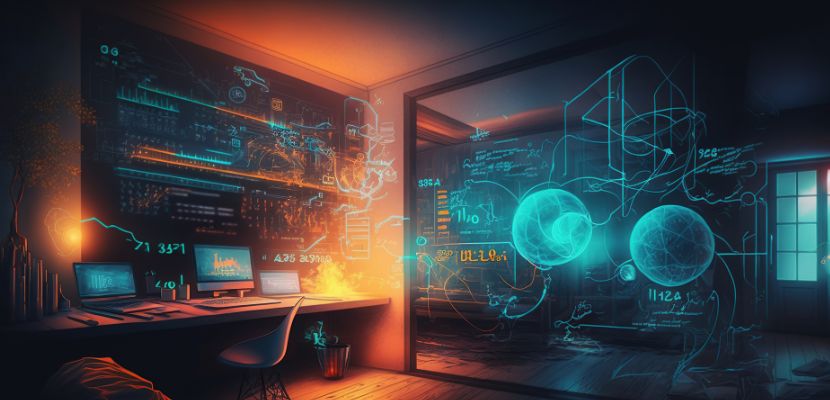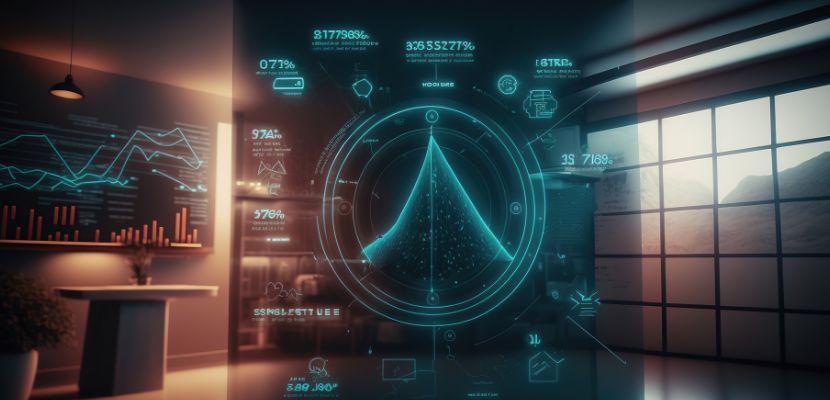Cyberspace refers to the virtual environment created by interconnected computer networks, digital communication systems, and online platforms.

What Is Cyberspace in Simple Terms?
Cyberspace is the collective, virtual environment that emerges from the global interconnection of computer systems, networks, and digital communication technologies. It encompasses the vast array of online infrastructures, platforms, and services that enable the storage, exchange, and processing of information in electronic form.
Unlike physical spaces, cyberspace is not bound by geography; it exists as a shared domain where individuals, organizations, and governments interact, communicate, and conduct transactions in real time. This domain includes everything from email systems, websites, and social media platforms to cloud computing, financial networks, and critical infrastructure controls.
Cyberspace is both a technical and social construct, shaped by the technologies that sustain it and the human activities that take place within it. It is also recognized as a strategic domain of national and international importance, influencing economics, security, culture, and daily life in ways that blur the boundaries between the physical and digital worlds.
Types of Cyberspace
Cyberspace is not a single, uniform environment but rather a collection of interconnected domains that serve different purposes. These domains reflect how people, organizations, and systems use the digital world for communication, data exchange, commerce, governance, and entertainment. The following are the main types of cyberspace and their functions.
Public Cyberspace
This is the open, accessible part of the internet where most everyday online activities occur. It includes websites, search engines, social media, streaming services, and other publicly available platforms. Public cyberspace is designed for general use and is usually governed by minimal restrictions, making it the most familiar environment for individuals.
Private Cyberspace
Private cyberspace refers to restricted or controlled digital environments accessible only to authorized users. Examples include corporate intranets, private cloud networks, and personal online accounts. These spaces are designed to protect sensitive information and provide secure communication channels for businesses, organizations, and individuals.
Government and Military Cyberspace
This type consists of specialized digital domains operated and maintained by government agencies and armed forces. It is used for national security, intelligence, law enforcement, and defense operations. Strong safeguards, classified networks, and advanced monitoring technologies are implemented here to protect critical data and infrastructure from cyber threats.
Commercial Cyberspace
Commercial cyberspace covers online environments built for trade, business, and economic activities. This includes ecommerce platforms, digital banking systems, online marketplaces, and financial transaction networks. It plays a key role in modern economies by enabling fast, global trade and services.
Dark Web/Deep Cyberspace
The dark web is a hidden layer of cyberspace accessible only through special tools such as Tor. Unlike the public internet, it is not indexed by search engines and is often associated with anonymity. While it is used for legitimate purposes like privacy protection and bypassing censorship, it is also known for hosting illicit activities.
Components of Cyberspace
Cyberspace is made up of multiple interconnected layers that work together to create the digital environment where communication, data exchange, and online activities take place. These components combine technology, people, and processes, forming the foundation of the virtual domain. The main components include:
- Physical infrastructure. This refers to the hardware and tangible elements that support cyberspace. It includes servers, data centers, routers, satellites, fiber-optic cables, and end-user devices such as computers and smartphones. Without this infrastructure, the digital world cannot function.
- Networks and connectivity. Networks provide the pathways that link devices and systems across the globe. The internet, local area networks (LANs), wireless connections, and cellular networks form the backbone of connectivity, enabling seamless communication and data transmission between users and machines.
- Software and applications. Operating systems, web browsers, communication platforms, and specialized applications form the interactive layer of cyberspace. These tools allow users to access, create, share, and manipulate digital content in both personal and professional contexts.
- Data and information. At the heart of cyberspace lies the vast amount of digital data that fuels interactions. This includes personal information, business records, multimedia content, financial transactions, and real-time communication streams. Managing and securing this data is critical to the stability of cyberspace.
- Users and human interaction. People are an essential component of cyberspace, as they create content, manage systems, and drive interactions. Human behavior, culture, and social dynamics shape how cyberspace evolves, making it not just a technical construct but also a social and cultural one.
- Security and governance mechanisms. To ensure safe and reliable operation, cyberspace relies on cybersecurity protocols, encryption, access controls, and regulatory frameworks. Governance involves laws, policies, and standards that define how cyberspace is used, protected, and managed across global, national, and organizational levels.
Cyberspace Examples

Here are a few clear examples of cyberspace in practice:
- Social media platforms. Environments like Facebook, X (Twitter), Instagram, and LinkedIn represent public cyberspace where people communicate, share content, and interact socially.
- Corporate intranets. Internal company networks that allow employees to collaborate, share documents, and access organizational resources securely.
- Ecommerce platforms. Websites such as Amazon, Alibaba, or eBay, where commercial transactions and global trade take place digitally.
- Government portals. Online services like digital tax filing systems, e-government applications, or secure military communication networks, which serve public administration and national security needs.
- Cloud services. Platforms like Google Drive, Microsoft Azure, or AWS, where individuals and organizations store, process, and manage data online.
- The dark web. A hidden layer of cyberspace that requires special browsers like Tor, offering anonymity and access to both legitimate services (e.g., privacy-focused communication) and illicit markets.
Characteristics of Cyberspace
Cyberspace has several defining characteristics that set it apart from physical environments. These traits highlight how it functions, how people interact within it, and the challenges it presents for security, governance, and daily use. They include:
- Global and borderless. Cyberspace transcends geographic and political boundaries. Information can flow across countries instantly, making it a truly global environment where users from different parts of the world can interact without physical limitations.
- Virtual and intangible. Unlike the physical world, cyberspace exists as a digital construct. It has no physical form but is experienced through networks, devices, and interfaces that connect people to virtual spaces.
- Interconnected. The strength of cyberspace lies in the interconnection of networks, systems, and devices. This interconnectedness enables seamless communication, collaboration, and data exchange on a global scale.
- Dynamic and evolving. Cyberspace is constantly changing due to technological innovation, new platforms, and evolving user behaviors. This dynamism makes it both adaptable to emerging needs and challenging to regulate effectively.
- Accessible and inclusive. With internet-enabled devices, people across the world can access cyberspace. While digital divides still exist, cyberspace provides opportunities for communication, education, and commerce that were not possible before.
- Anonymity and identity fluidity. Users in cyberspace can present themselves with varying degrees of anonymity. This allows for freedom of expression and privacy but also creates challenges such as cybercrime and identity fraud.
- Vulnerable and risk-prone. Despite its advantages, cyberspace is highly vulnerable to security risks. Cyber attacks, data breaches, malware, and disinformation highlight its susceptibility, making security a core concern.
- Governed by rules and protocols. Cyberspace operates on technical standards, protocols, and legal frameworks. These rules ensure interoperability, manage ownership of digital assets, and define acceptable use while balancing freedom and regulation.
How Does Cyberspace Work?
Cyberspace works through the interaction of interconnected technologies, digital infrastructure, and human activity that together create the virtual environment we use every day. At its foundation, physical infrastructure such as servers, data centers, fiber-optic cables, satellites, and end-user devices provides the hardware backbone. These are linked by networks that use communication protocols like TCP/IP to transmit data reliably across local, regional, and global systems.
On top of this physical layer, software and applications interpret, organize, and present data in ways that make it accessible to users, whether through web browsers, mobile apps, or cloud platforms. When a user sends a message, makes a purchase, or streams a video, the request is broken into data packets, transmitted through multiple routing systems, and reassembled at the destination, all within fractions of a second.
Cyberspace is also shaped by human participation and governance. Users generate and consume content, while organizations and governments establish policies, cybersecurity measures, and regulations that control how data and systems are accessed and protected. Security layers such as encryption, firewalls, authentication, and monitoring systems ensure data confidentiality and integrity while reducing the risk of cyber attacks.
Cyberspace Threats
While enabling global communication and innovation, cyberspace is also vulnerable to a wide range of security risks. These threats exploit weaknesses in networks, systems, and human behavior, often leading to data breaches, financial losses, service disruptions, and even national security risks. Below are the main types of cyberspace threats and their implications:
- Malware attacks. Malicious software such as viruses, worms, Trojans, and ransomware infiltrates systems to damage, steal, or lock data. Ransomware in particular has become a major concern, encrypting critical files and demanding payment for access.
- Phishing and social engineering. Attackers trick individuals into revealing sensitive information such as passwords, financial details, or access credentials. These attacks often use deceptive emails, websites, or messages designed to appear legitimate.
- Distributed denial of service (DDoS) attacks. By overwhelming servers or networks with massive traffic, attackers disrupt services, making websites, applications, or entire systems unavailable to users. This is often used to cause disruption or extort organizations.
- Man-in-the-middle (MitM) attacks. In these attacks, cybercriminals intercept communication between two parties to steal data, alter messages, or impersonate one of the parties. Unsecured Wi-Fi networks are common targets for this method.
- Advanced persistent threats (APTs). These are prolonged, targeted attacks where hackers gain unauthorized access to networks and remain undetected for extended periods. APTs are typically used for espionage, data theft, or sabotage against corporations and governments.
- Insider threats. Employees, contractors, or partners with legitimate access can intentionally or unintentionally compromise systems and data. This makes insider threats particularly difficult to detect and mitigate.
- Zero-day exploits. These attacks take advantage of unknown or unpatched vulnerabilities in software or hardware. Because the flaws are undiscovered or unaddressed, they pose significant risks until security patches are released.
- Cyberterrorism and state-sponsored attacks. Nation-states or organized groups may launch cyber attacks against critical infrastructure, government networks, or financial systems to disrupt operations, steal intelligence, or advance political objectives.
How to Build a Secure Cyberspace?

Creating secure cyberspace requires coordinated efforts across technology, governance, and human awareness. It involves a layered approach that protects infrastructure, safeguards data, and promotes responsible user behavior. Below are the key steps to building a secure cyberspace:
- Strengthen infrastructure security. The foundation of cyberspace security lies in protecting the physical and digital infrastructure. This includes deploying firewalls, intrusion detection systems, and advanced endpoint protection. Redundant systems and regular updates ensure resilience against outages and vulnerabilities.
- Implement strong authentication and access controls. Multi-factor authentication (MFA), role-based access control (RBAC), and the principle of least privilege help limit access to sensitive systems. By ensuring that only authorized users can interact with critical resources, organizations reduce the risk of insider abuse and external breaches.
- Encrypt data and communications. Encryption protects the confidentiality and integrity of data, both in transit and at rest. Using protocols such as TLS/SSL for communication and strong encryption standards for storage ensures that intercepted information cannot be exploited by attackers.
- Promote cybersecurity awareness and training. Human error is often the weakest link in cybersecurity. Regular training on phishing detection, password hygiene, and safe online behavior helps individuals recognize and avoid threats. A culture of security awareness is essential across all user groups.
- Establish monitoring and incident response systems. Continuous monitoring with tools like SIEM (security information and event management) and threat intelligence platforms allows quick detection of suspicious activity. Well-defined incident response plans ensure that organizations can contain, investigate, and recover from breaches efficiently.
- Apply regular updates and patch management. Outdated systems and unpatched software are prime targets for attackers. Automating updates and maintaining a structured patch management program closes vulnerabilities before they can be exploited.
- Develop legal and regulatory frameworks. Governments and organizations must create policies, laws, and international agreements that define acceptable use, protect user privacy, and punish cybercrime. Clear governance ensures accountability and standardized practices across cyberspace.
- Encourage collaboration and information sharing. Cyber threats often transcend borders and industries. Cooperation between governments, businesses, and international organizations helps share threat intelligence, coordinate defenses, and respond more effectively to global attacks.
What Are the Benefits and the Limitations of Cyberspace?
Cyberspace offers immense opportunities for communication, commerce, education, and innovation, but it also presents significant challenges. While it enables global connectivity, instant access to information, and new forms of collaboration, it is equally marked by risks such as security vulnerabilities, privacy concerns, and digital inequality.
Cyberspace Benefits
Cyberspace has transformed the way individuals, businesses, and governments operate by creating a virtual domain that extends beyond geographical and physical boundaries. It provides opportunities for faster communication, greater efficiency, and new avenues of innovation. Below are the main benefits of cyberspace:
- Global connectivity. Cyberspace enables people across the world to connect instantly, regardless of location. This has made cross-border communication, international collaboration, and cultural exchange faster and more accessible than ever before.
- Access to information and knowledge. Vast amounts of data, research, and educational resources are available online. Cyberspace democratizes access to knowledge, allowing individuals to learn new skills, access digital libraries, and stay informed in real time.
- Economic growth and ecommerce. Online marketplaces, banking systems, and digital payment platforms have created new business models and expanded global trade. Businesses can reach wider audiences, while consumers benefit from convenience and choice.
- Innovation and technological advancement. Cyberspace fosters innovation by supporting research, collaboration, and the development of new technologies. Cloud computing, AI, and IoT all thrive within cyberspace, driving industries forward.
- Improved communication and collaboration. From video conferencing to real-time collaboration tools, cyberspace supports efficient teamwork across distances. Organizations can operate globally with minimal delays, reducing costs and improving productivity.
- Entertainment and social interaction. Streaming services, gaming platforms, and social media provide new forms of leisure and social connection. These outlets enrich daily life and create digital communities.
- Government and public services. E-government platforms enable citizens to access services such as tax filing, healthcare records, and online voting. This improves efficiency, transparency, and public engagement.
Cyberspace Limitations
While cyberspace has transformed the way people communicate, work, and access information, it is not without its drawbacks. These limitations stem from technical, social, and security challenges that affect individuals, organizations, and governments. Recognizing them is essential to building safer and more inclusive digital environments. They include:
- Security vulnerabilities. Cyberspace is highly susceptible to cyber attacks, malware, phishing, and data breaches. Even advanced defense mechanisms cannot guarantee complete protection, leaving users and systems at constant risk.
- Privacy concerns. The widespread collection and storage of personal data expose users to surveillance, identity theft, and misuse of information. Many online platforms monetize data, which raises ethical and legal concerns about privacy.
- Digital divide. Access to cyberspace is uneven, with disparities between developed and developing regions, urban and rural areas, and different socioeconomic groups. This gap limits opportunities for those without reliable internet or modern devices.
- Overdependence on technology. Heavy reliance on cyberspace for business, education, healthcare, and communication makes societies vulnerable to disruptions. Outages, system failures, or cyber attacks can halt critical services and cause widespread impact.
- Misinformation and disinformation. The open nature of cyberspace allows the rapid spread of false or misleading information. This undermines trust, influences public opinion, and can have serious consequences for politics, health, and social stability.
- Lack of clear governance. Cyberspace is global and borderless, but regulations differ across countries. The absence of universal governance creates challenges in enforcing laws, addressing cross-border cybercrime, and ensuring consistent standards.
- Anonymity abuse. While anonymity protects freedom of expression, it is also exploited by criminals for fraud, harassment, or illicit activities on the dark web, complicating efforts to maintain accountability.
What Is the Difference Between the Internet and Cyberspace?
The internet is the global system of interconnected computer networks that provides the physical and technical infrastructure for digital communication. It consists of hardware (servers, routers, fiber-optic cables, satellites) and protocols (such as TCP/IP) that enable devices to connect and exchange data. In other words, the internet is the backbone that makes global connectivity possible.
Cyberspace, on the other hand, is the virtual environment created on top of that infrastructure. It represents the space where users interact, exchange information, and carry out activities such as social networking, ecommerce, cloud computing, and digital collaboration. Unlike the internet, which refers to the physical and technical layer, cyberspace is a conceptual domain that includes both the technology and the human interactions occurring within it.